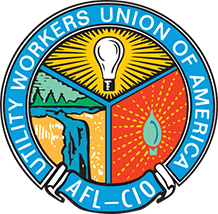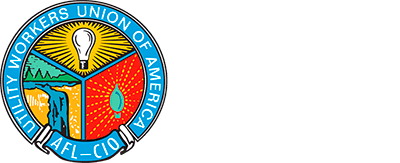The theme of the Utility Workers Union of America’s 31st and most recent constitutional convention in 2019 was “Our Mission: Protecting Our Legacy, Building Our Future!” and with the rapid changes occurring in the utility industry there is no better mission. Our industry is changing quickly. Although some of these changes are resulting in the creation of new jobs, they are most often non-union jobs, and they are in far fewer numbers than the jobs they replaced.
Organize or die? The choice is clear and so is the path. All that’s required is that we pull together.
At the recent Region IV conference, I got the attention of the members in attendance when I made the statement “Organize or Die” in reference to the current status of the UWUA. While some may feel this statement extreme, I feel it is a reality of what lies before us as a labor union. For as long as I can remember, the UWUA referred to ourselves as a 50,000-member union; recently, we had to acknowledge that we could no longer make that claim. The reality is that the past several years of coal and nuclear generation plant closures have not only decimated many local unions but also have taken a significant toll on the UWUA’s overall membership.
Historically, the UWUA has always carried far more weight than its total membership would suggest. Our union still has great influence in both the legislative and regulatory arenas, both nationally and internationally. Whether it be helping craft new energy legislation, working with utility industry regulators to ensure service levels, or partnering with utility industry groups like the American Gas Association, the Edison Electric Institute, or the BlueGreen Alliance to further the interests of its membership, the UWUA is seen as a leader in the industry.
It is imperative that the UWUA organize. For years we relied on our utility employers to maintain our membership numbers through hiring; however, this has resulted in the slow attrition of the membership, which, coupled with the transition from traditional electric generation to renewable electric generation, requires us to reconsider what it means to be a utility worker. There are several keys to not only maintaining but increasing our representational density in the utility industry:
Organize aggressively with our existing employers and attempt to organize them wall-to-wall.
Gone are the days of believing that a utility worker is a field employee. In fact, our most successful organizing local unions have long since embraced an all-workers approach, not just field employees. The facts show that these locals have maintained, and, in many cases, increased their membership. Examples can be found across the country at locals such as 1-2, 369, 223, and the Michigan State Utility Workers Council, to name just a few.
Adapt to the changing utility industry by following the work.
The transition from traditional electric generation to renewable generation has resulted in jobs with traditional utilities changing to jobs with independent power producers. At present, independent power producers are seldom unionized and are most often anti-union. This has resulted in the loss of far more, good-paying union jobs than the few non-union jobs being created. We must follow the work and aggressively organize these independent producers. The National is doing this in the state of Texas where we are in the process of organizing two different wind energy groups with as many as 300 workers.
Organize where there are unorganized individuals.
This includes organizing in states where we currently have no members, and in many cases in right-to-work states. Recently, 90 workers with Delta Gas elected to join UWUA. In Georgia, we’re working to organize roughly 90 gas workers.
Organize or die? The choice is clear and so is the path. All that’s required is that we pull together. In doing so, we will ensure that the UWUA continues to be well-positioned to fulfill our mission of protecting our legacy and building our future.

